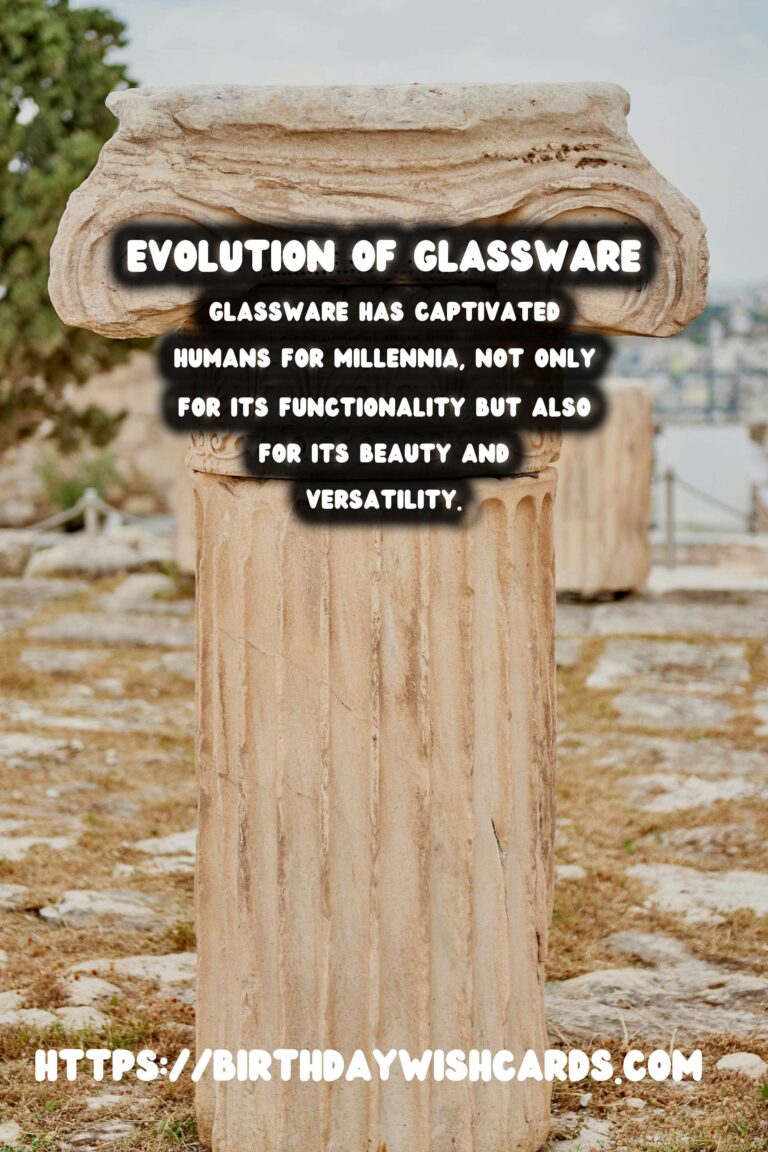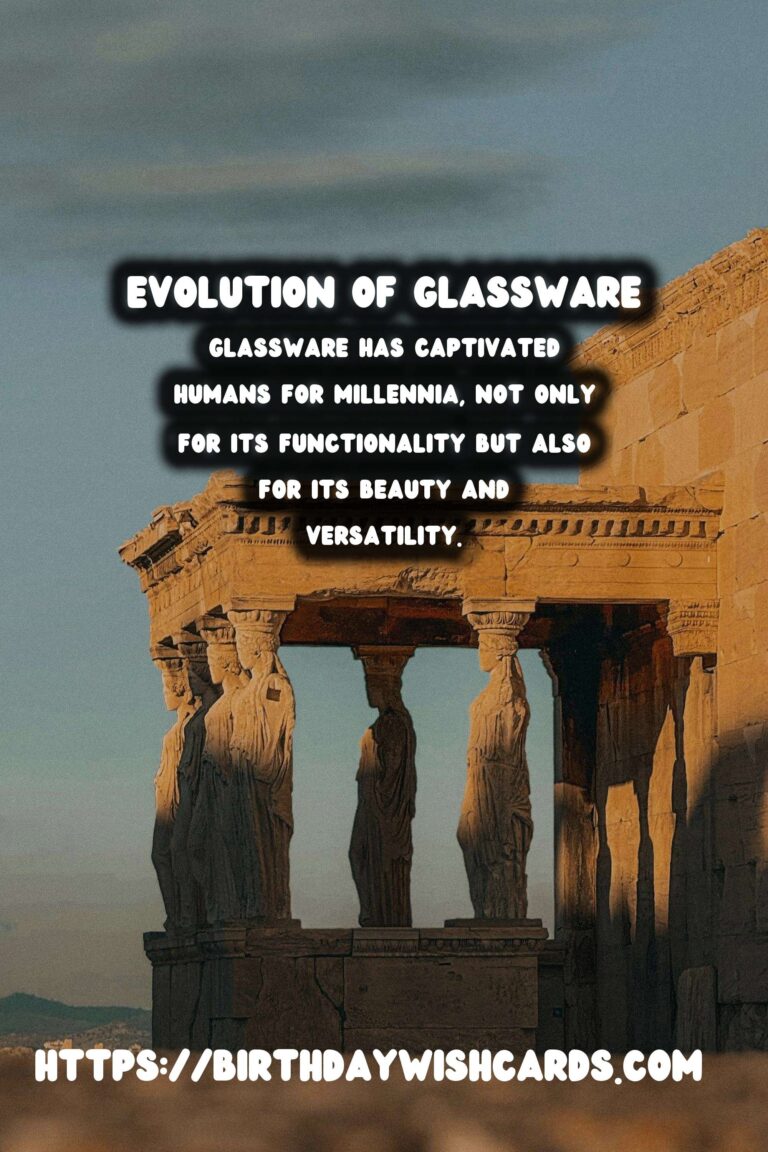
Glassware has captivated humans for millennia, not only for its functionality but also for its beauty and versatility. From the rudimentary vessels of antiquity to the intricate stained glass windows that adorn historic cathedrals, glass has played an essential role in human civilization.
Origins of Glass
The journey of glass begins around 4,000 years ago, with the ancient Mesopotamians and Egyptians among the first known to create glass objects. Early glassmaking techniques were primitive, resulting in cloudy and opaque products. Nevertheless, glass quickly became a treasured commodity, reflecting wealth and status.
Roman Innovations
The Roman Empire propelled glassmaking to new heights. Romans developed glassblowing, a transformative technique that allowed for the creation of larger and clearer glass objects. This innovation made glass more accessible and practical, influencing everything from tableware to decorative pieces.
Medieval Advancements
During the medieval period, European glassmakers began to focus on artistry, leading to the creation of stained glass. These vibrant, intricate designs were used extensively in churches, creating a new medium for storytelling and religious expression.
Renaissance and Beyond
The Renaissance sparked a renewed interest in science and art, impacting glassmaking significantly. Venice became the epicenter of glass innovation, with Venetian glass known for its exquisite detail and vibrant color. The expertise of Venetian craftsmen was unparalleled, establishing the city as a glassmaking powerhouse.
Industrial Revolution Impact
The Industrial Revolution introduced mechanization into the glass industry, allowing for mass production. Despite fears that this would diminish craftsmanship, it instead led to a democratization of glass, making it a staple in homes worldwide.
Modern Glass Applications
Today, glass is indispensable in both functional and decorative capacities. Innovations in technology have led to stronger, more versatile glass types, used in everything from smartphones to architectural wonders. The role of glass as both art and utility continues to evolve, reflecting and refracting the cultures that use it.
The Future of Glass
The future promises further advancements in glass technology, potentially expanding its applications in fields like renewable energy and engineering. As we continue to innovate, the legacy of ancient glassmakers will persist, shaping a transparent world where the past and future are interconnected.
Glassware has captivated humans for millennia, not only for its functionality but also for its beauty and versatility. The Roman Empire propelled glassmaking to new heights. 









#GlasswareHistory #StainedGlassEvolution




